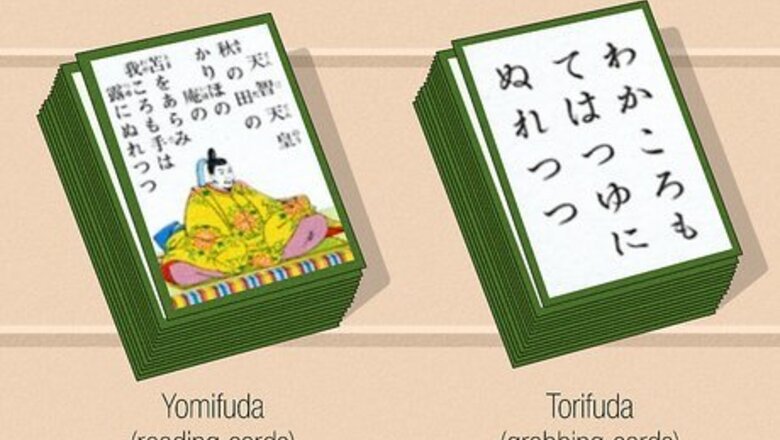
views
- Player count: 3
- Required materials: Traditional karuta cards
- Objective: Be the first player to touch a card that matches one that’s drawn from a deck. Win the game for touching the most correct cards first.
Setup
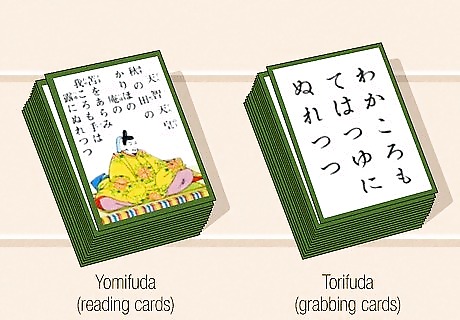
Use a set of traditional karuta cards. Karuta cards come in 2 different decks. Yomifuda, or “reading cards,” have poems or clues written on them in Japanese. Torifuda, or “grabbing cards,” have pictures, answers, or the last lines of a poem that match one of the yomifuda. Both yomifuda and torifuda cards come in decks of 100 cards, but you can use any number of them during your game. Karuta cards typically are written in Japanese, so they’re great for practicing your reading and speaking skills. If you don’t know Japanese, look for versions of karuta cards in your native language. In a pinch, you may use traditional playing card decks. Because the sets come in decks of 52, you will need one deck to replace for "reading cards" and another deck for the "grabbing cards."
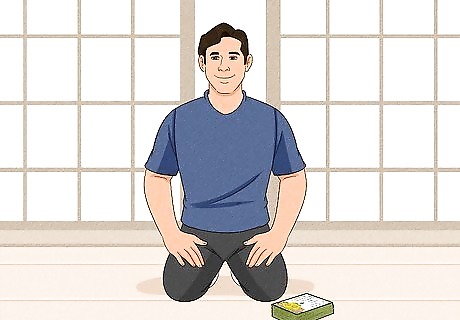
Choose a player to be the reciter. Karuta requires at least 3 people: 2 players who face off against each other and one more person to recite the reading cards out loud. Pick someone with a clear speaking voice that the other players can easily hear. You’re not allowed to be the reciter if you’re one of the two players because it can give you an unfair advantage. Matches of karuta only last about 5–15 minutes, so you can easily switch between being the reciter and playing the game.
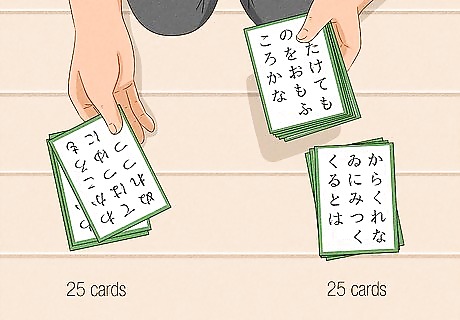
Shuffle and deal 25 grabbing cards to each player. Shuffle the deck of grabbing cards so they’re thoroughly mixed. The reciter will deal the cards one at a time to each player until they each have 25 cards. The other 50 cards in the deck of "grabbing" cards will not be used. If you’re using a standard card deck, shuffle them and give each player 26 cards.
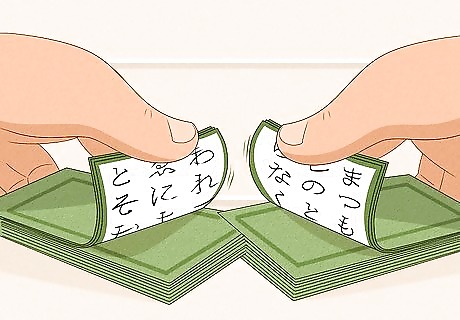
Shuffle the reading cards into a face-down stack. The reciter shuffles all 100 reading cards together so they’re randomly mixed. After shuffling, the reciter places the deck face down in front of themselves. When you use regular playing cards, shuffle a second deck and place them next to the reciter.
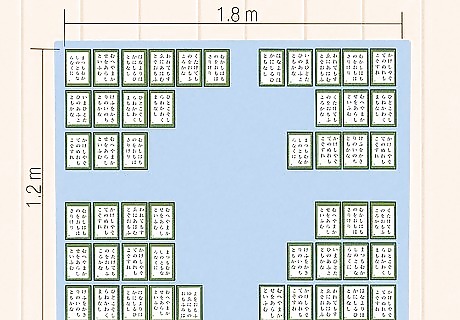
Flip and arrange the grabbing cards into rows. Both players flip over their 25 grabbing cards so that they are face-up in front of them. Each player places their cards into 3 rows: two rows with 8 cards and one with 9. Leave about 1 centimetre (0.39 in) between each row. Use a space that’s about 1.2 m × 1.8 m (3.9 ft × 5.9 ft), like on a large table or on the floor. A player’s 3 rows are considered their “territory.” Make sure the player territories are no further apart than 3 centimetres (1.2 in).
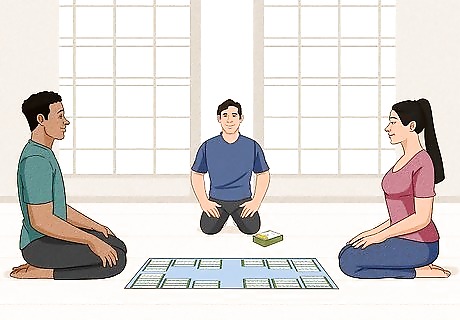
Have players sit or kneel behind their territory. It doesn’t matter which position the players choose as long as they’re doing the same thing. Players must keep their body at least 30 centimetres (12 in) away from their territory. Traditionally, players would sit on a tatami mat during the game, but they are not required to play.
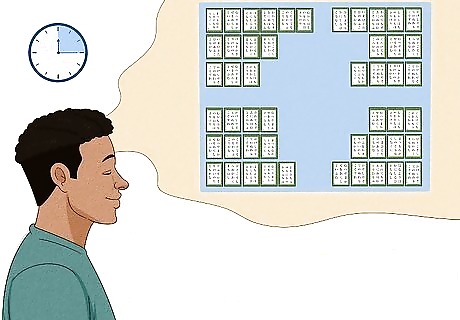
Take 15 minutes to memorize the position of the grabbing cards. With the grabbing cards visible, give players a chance to look at and memorize the positions of all the grabbing cards. During the last 2 minutes, players can practice quickly reaching and touching cards. As a player, keep your eye on cards in your opponent’s territory too because you may have to reach for them.
Playing the Game
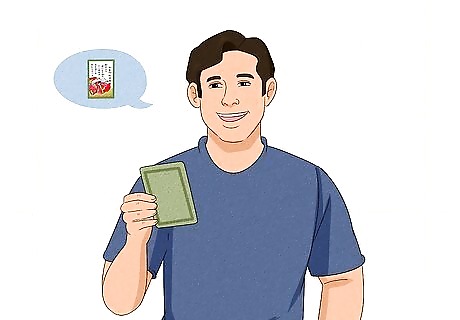
The reciter draws a reading card and reads it out loud. The reciter chooses a card randomly from the deck and slowly reads it out loud to the players. When they’re finished reading the card, they discard it into a separate pile. If you are using regular playing cards, just read the suit and rank of the card, such as “Ace of Spades.”
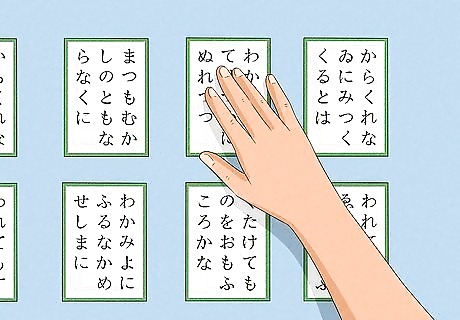
Other players race to touch the matching grabbing card first. Once the reciter finishes reading what’s on their card, both players search for the grabbing card that has the matching image or last lines of the poem. When a player finds the card, they quickly try to be the first to touch it. The player that touches the correct grabbing card first takes the card and places it face-down in a pile in front of themselves. If you are using regular playing cards, find the playing card that matches the suit and rank of the reading card.
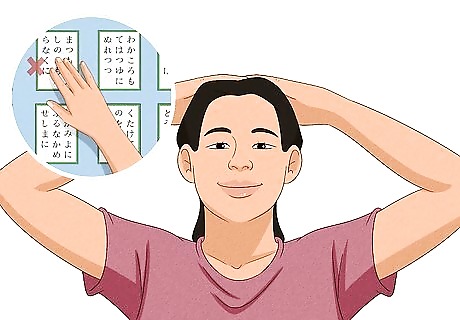
Lose a turn for touching the wrong card or sitting out of position. If a player touches a card that doesn’t match the reading card, they forfeit their next turn and must place their hands on their head. Players also forfeit their next turn if the reciter catches them out of position, like if they’re leaning forward while their opponent is seated properly. As an optional rule, you may make a player pay a "fine" by discarding a card from their pile for breaking rules rather than having them skip a turn.
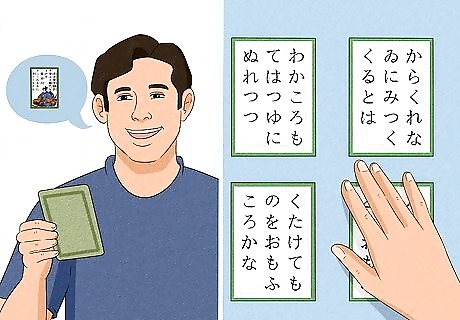
Continue reading and picking up the remaining cards. After the first card, the reciter chooses a new reading card to start the next round. Players continue trying to find the matching grabbing card until all of the grabbing cards have been picked up. If the reading card doesn’t have a matching grabbing card in play, then the players must wait for the reciter to read the next card.
Winning
Win the game if you picked up the most cards during the game. Once all of the grabbing cards in both territories have been picked up by players, the game is over. Players count the cards they have in their face-down piles, and whoever has the most wins the game!




















Comments
0 comment